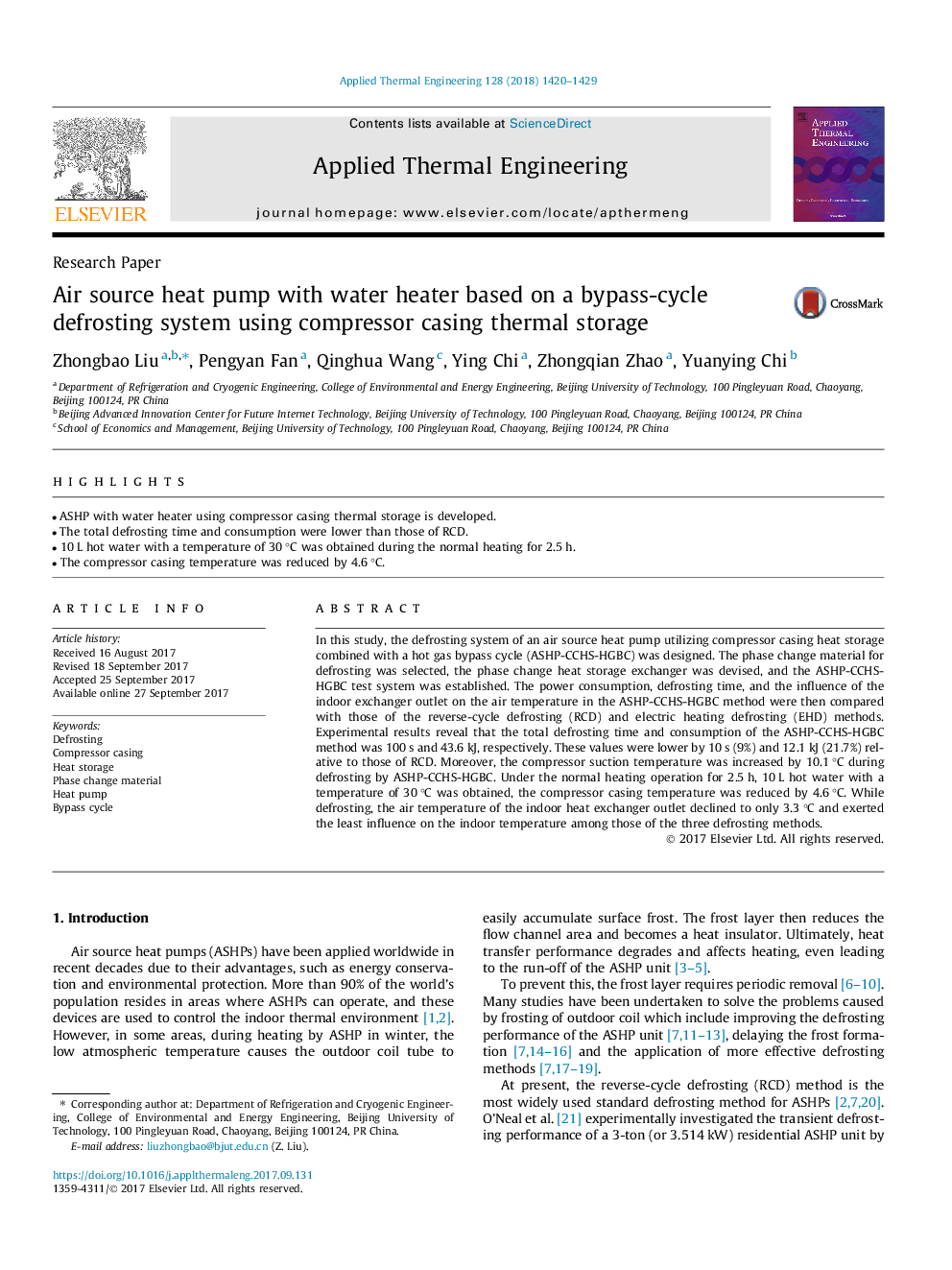| کد مقاله | کد نشریه | سال انتشار | مقاله انگلیسی | نسخه تمام متن |
|---|---|---|---|---|
| 4990885 | 1368115 | 2018 | 10 صفحه PDF | دانلود رایگان |
- ASHP with water heater using compressor casing thermal storage is developed.
- The total defrosting time and consumption were lower than those of RCD.
- 10 L hot water with a temperature of 30 °C was obtained during the normal heating for 2.5 h.
- The compressor casing temperature was reduced by 4.6 °C.
In this study, the defrosting system of an air source heat pump utilizing compressor casing heat storage combined with a hot gas bypass cycle (ASHP-CCHS-HGBC) was designed. The phase change material for defrosting was selected, the phase change heat storage exchanger was devised, and the ASHP-CCHS-HGBC test system was established. The power consumption, defrosting time, and the influence of the indoor exchanger outlet on the air temperature in the ASHP-CCHS-HGBC method were then compared with those of the reverse-cycle defrosting (RCD) and electric heating defrosting (EHD) methods. Experimental results reveal that the total defrosting time and consumption of the ASHP-CCHS-HGBC method was 100 s and 43.6 kJ, respectively. These values were lower by 10 s (9%) and 12.1 kJ (21.7%) relative to those of RCD. Moreover, the compressor suction temperature was increased by 10.1 °C during defrosting by ASHP-CCHS-HGBC. Under the normal heating operation for 2.5 h, 10 L hot water with a temperature of 30 °C was obtained, the compressor casing temperature was reduced by 4.6 °C. While defrosting, the air temperature of the indoor heat exchanger outlet declined to only 3.3 °C and exerted the least influence on the indoor temperature among those of the three defrosting methods.
Journal: Applied Thermal Engineering - Volume 128, 5 January 2018, Pages 1420-1429
